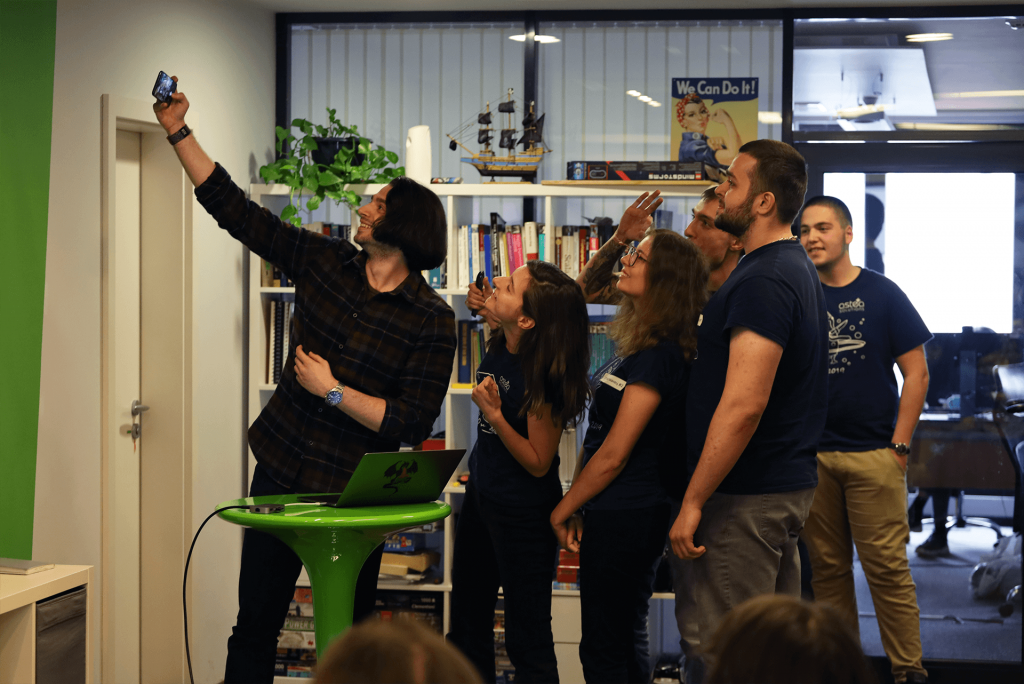
Learning through creating practical applications
Two engaging presentations and a delicious cake marked the end of Astea’s 2019-2020 winter internship program for developers and QAs. Here is how we kept our interns busy for the past four months.
The internship structure
The program was split up into two parts: first, there was an initial practical training and after that, the interns started working in groups on real in-house projects with challenging requirements.
During the first two months of the program, the interns learned about some of the most popular technologies for web development. In the beginning, they had crash courses on JavaScript and TypeScript. As the program advanced the dev interns took on more challenging endeavors and learned about different technologies such as React, Node.js, PostgreSQL, the Objection ORM, and Docker. Meanwhile, the QA interns went through several test frameworks, including Mocha, Chai, WebDriver.io, and Insomnia. Every lesson was recorded and accompanied by an appropriate task that helped the interns consolidate the newly acquired knowledge. This was an essential stage of the program because it encouraged the mentors and the interns to build a good team spirit and a positive working environment – factors that play a major role in any group project.
The projects
In the second part of the program, the complexity was increased as the interns formed two separate groups that worked on two different in-house projects. This turned out to be a very valuable experience since the two teams went through all the steps of the software development process. Every team consisted of three dev interns and two QA interns.
The groups came up with their own original ideas on how to implement the projects and the Astea mentors played a double role in this edition of the program – they were both advising the interns on the tasks, and representing the “clients” and their expectations for the final products. The results were awesome, and both of the teams succeeded in developing, testing, and presenting two proprietary applications: Journey Journal and Astea Library.
The final products
Journey Journal is a trendy web-based application that allows its users to share their thoughts, impressions, and pictures from recent trips. The J&J team faced various challenges in the development process as they started to implement new features. But despite the difficulties, they delivered a fantastic and responsive application. In the process, the interns learned how to integrate and augment mobile-friendly interactive maps, how to create photo galleries, and also how to implement automated testing.
Astea Library is a very useful web-based application that allows Astea’s employees to keep track of the books they exchange in the office. The Librarians team had a very close to real-life experience as they had to go through many mock-ups and discussions with the “clients” before finalizing the application’s features and design. They also mastered the automated testing and the visualization of activities and transfers.
At the end of the internship program, the two teams prepared detailed and entertaining presentations on their projects and the experience they gained. This was the most anticipated and exciting part of the program for the whole Astea team. We are truly proud of the interns’ achievements and we are looking forward to the next edition of Astea’s internship program!
Check out the latest news about our internship program







